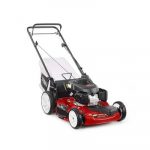Gardeners are always looking for organic substances that will enrich the soil of their gardens. We all know about mulch and compost. Are you aware of Coco Coir?
What Is Coco Coir?
Coco Coir is an organic substance found between the shell of a coconut and the coconut itself. It is a byproduct of coconut fiber. Originally used in gardens in the 19th Century, the substance loss favor because of its low quality. The material degraded when used for short-term growing.
Manufacturing methods made it into a hardier product and soon it was recognized as an ideal organic, environmentally sustainable material for improving plant growth.
The process of manufacturing Coco Coir involves submerging the coconut husk into water and leaving it there for six months or longer to decompose.
Once cured, steel combs are used to remove the coconut fiber from the shells in a process known as defibering.
After the fiber has been collected, it is dried and then pressed into bricks, discs, coir pots, or bagged as loose mulch.
Types Of Coco Coir

There are three types of Coco Coir –- Coco Pith or peat, Coco Fibers, and Coco Chips.
Coco Pith or peat is similar to peat moss. However, it has a rich brown color. It is dense. So it can retain water extremely well.
Coco Fibers are stringy. In that state, oxygen can penetrate through it and reach the root systems of plants. The fiber itself is not very absorbent and will decay over time. This decreases how much air gets to the roots of the plants. Coco Fibers are hardy enough to be reused.
Coco Chips are small clumps of coir that combine the best properties of peat and fiber. The chips retain water and also permit air pockets to develop in the soil.
Advantages Of Using Coco Coir
Coco Coir stimulates quick harvests and big yields. When used in combination with the right nutrients in water, plants spend less time seeking food and more time growing.
It provides plenty of room for root systems for best air exposure. It offers a combination of great water retention, reliable drainage, and ideal aeration.
It has a neutral pH range. However, it fluctuates over time. So there is a need for nutrient support.
Coco Coir limits harmful pathogens and repels some pests. It boasts antifungal properties in the soil that keeps roots thriving.
It is a sustainable product. On average, a coconut tree produces 150 coconuts a year. Coco coir uses parts of the coconut that would otherwise go to waste.
When properly treated, it is durable, thus reusable.
Disadvantages Of Using Coco Coir
Coco Coir could have elements that can cause problems for plants. For example, its possible that the Coco Coir you are considering purchasing has high amounts of salt. Enquire as to how the Coco Coir you select was produced. If the husks were soaked in salt water, make certain that the manufacturer rinsed it with fresh water. If this can’t be determined or the manufacturer did not rinse it, it’s advised that you rinse it yourself.
At the end of the drying process, the coco coir might be treated with chemicals meant to kill any pathogens blooming within. The chemical residue could affect your plants. Read the product label or check the manufacturer’s website to learn more.
Finally, Coco Coir stores and releases nutrients as needed. However, it can hold calcium, magnesium and iron. Therefore, you may need to add substances that boost these nutrients.
You need to know that coco coir must be fed to the soil daily. Moreover, it is extremely difficult to overwater and it holds on to oxygen even when drenched.
How To Use Coco Coir
If you purchase Coco Coir bricks, then you will need to rehydrate it to turn it from a compact, lightweight block into a fluffy substrate. Some have used a large bucket or wheelbarrow to hold it while adding the water. Use warm water and slowly pour it over the brick. Add just a little water at a time to avoid overhydrating. It may take some time to soften the brick and expand the fibers.
Once ready, add to garden as a mulch to assist in conserving moisture. It is also an ideal potting soil medium and a great substance for starting seeds and seedlings.
If you buy Coco Coir, but don’t use it right away, store it in a sealable container for later use.
(Sources: morningchores.com, advancednutrients.com, powerhousehydroponics.com, and shineledlighting.com)






